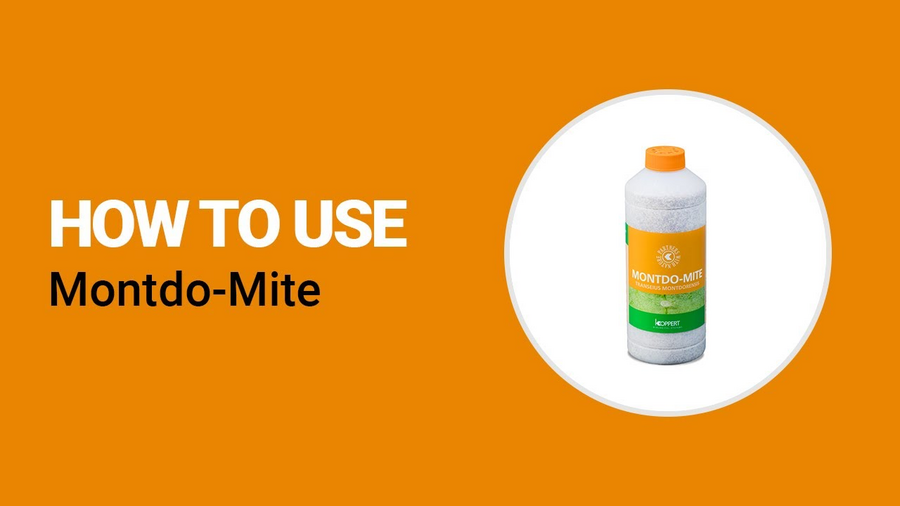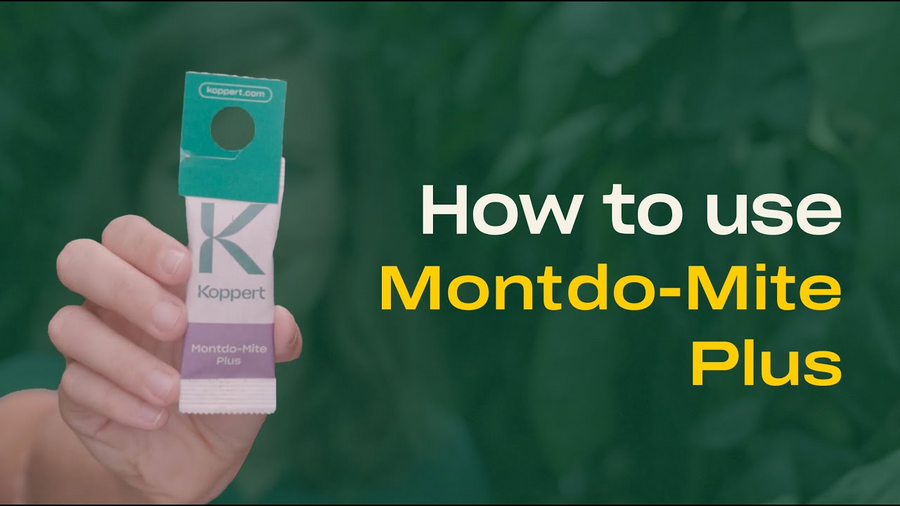Transeius montdorensis is a species of predatory mite utilized in biological pest control. These predatory mites are known for their effectiveness in controlling pest populations, including thrips, whitefly, non-webbing spider mites and rust mites. Transeius montdorensis exhibits predatory behaviour, actively preying on pest eggs, larvae, and nymphs. This contributes to the disruption of the pest's life cycle and helps in reducing overall pest numbers. As a natural enemy of various pests, Transeius montdorensis plays a significant role in integrated pest management (IPM) strategies.
Transeius montdorensis for pest control
Transeius montdorensis is used for the control of the following pests:
Transeius montdorensis mites actively seek out and prey on young larvae of various thrips species and whitefly eggs and larvae. The predatory mite also has an effect on all stages of non-webbing spider mites (e.g. European Red Mite, Panonychus ulmi) and rust mites.
Feeding behaviour of Transeius montdorensis
Predatory mites pierce their prey and suck out the contents. In addition to whiteflies, Transeius montdorensis preys on several other small organisms such as thrips, spider mites and tarsonemid mites. They can also feed on pollen, which is useful, for instance, in sweet pepper crops, as the predatory mite can establish in the crop before the pest appears. Transeius montdorensis mainly preys on young (white) eggs, crawlers and second instar larvae of whiteflies. At 25°C under optimal conditions, an adult female Transeius montdorensis lays approximately two eggs per day with Trialeurodes vaporariorum eggs as prey.
Life cycle of Transeius montdorensis
The life cycle of Transeius montdorensis consists of the following stages: egg, larva, protonymph, deutonymph, and adult. Eggs are laid on the underside of leaves. They are oval, white and have a diameter of approximately 0.14 mm. The larvae have six legs, are the same colour as the eggs, and are only slightly larger. The larvae of Transeius montdorensis have to feed. If they do not have access to food, they develop very slowly and the mortality is high. The nymphs are larger than the larvae, have eight legs, and are whitish yellow. Adult mites have eight legs, are a translucent white colour and have a flat, elongated body. They are roughly 0.4 mm in length. Males are smaller than females. The mites are very mobile and actively search for food on the underside of leaves. Their colour can vary according to the prey eaten from almost lucent whitish to opaque white or yellow. Due to their size and colour they are difficult to spot in the crop.
Best conditions for use of Transeius montdorensis
Transeius montdorensis is most effective at temperatures between between 20 and 32°C (68 and 90°F). It is not effective at temperatures below 15°C/59°F. Transeius montdorensis is sensitive to relative humidity below 70%.
Transeius montdorensis in bottles
The predatory mite Transeius montdorensis is available in a bottle (Montdo-Mite).
- Turn and shake bottle gently before use
- Push the centre of the cap to open the dosage hole
- Carefully sprinkle material on leaves
- Make sure the material remains on the leaves for at least a few hours after introduction
- Can also be applied with (Mini)-Air(o)bug
The dosage of Montdo-Mite depends on climate, crop and pest density and should always be adjusted to the particular situation. Start introduction as soon as the first pests are detected in the crop. Introduction rates typically range from 25-300 per m2/release. Releases should be repeated once or twice, or until control is achieved. Consult a Koppert advisor or a recognized distributor of Koppert products for advise on the best strategy for your situation.
Transeius montdorensis in sachets
The predatory mite Transeius montdorensis is also available in breeding sachets (Montdo-Mite Plus). In this case the predatory mites multiply in the sachet and disperse into the crop over a period of several weeks.
- Hang sachets in sheltered locations in the crop, avoid hanging into direct sunlight
- Sachets already have an exit hole
- Hold sachets by the cardboard strip at the top, to avoid damaging the predatory mites
The dosage of Montdo-Mite Plus depends on climate, crop and pest density and should always be adjusted to the particular situation. Start introduction preventively or as soon as the first pests are detected in the crop. Use at least 4,000 sachets per ha and hang them evenly spaced in the crop. Release should be repeated after 4 weeks if the pest is not controlled. Consult a Koppert advisor or a recognized distributor of Koppert products for advise on the best strategy for your situation.

